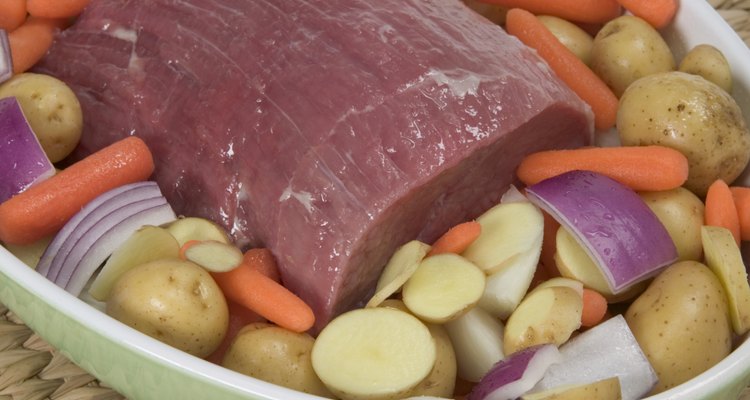
Jupiterimages/liquidlibrary/Getty Images
Ever wonder why, depending on the cut of meat, some beef cuts are more tender than others? The bottom round or rump roast, in particular, is taken from the rump portion and hind leg of beef so it's naturally a very tough cut of beef. While naturally tender cuts such as rib roast and tenderloin can be cooked over fast, high heat, you must braise bottom round roast over a long period of time to make the meat fork-tender.
What Constitutes a Tough Cut
Tough cuts of beef have some things tender cuts do not: a lot of connective tissue and dense, tightly wound muscle fibers. Muscle fibers tighten with use, so meat taken from the rump, shank and shoulder – the bulkiest, "buffest" muscles on the cow – have more toughness than lesser-used cuts like tenderloin and rib-eye. But toughness is no match for braising. Moist heat envelops the bottom round during braising, loosening and melting any tough parts of the meat into a delicate, delicious au jus you can use to sauce the roast with later.
Marinades
Tender cuts of meat require little more than a sprinkle of dry spices for flavoring, but tougher cuts such as bottom round roast benefit from marinating for longer hours. A marinade typically contains a fat such as olive oil, an acidic ingredient such as vinegar or citrus juice and a blend of herbs and spices. The acid in marinade helps break down tough fibers to make the bottom round roast tender. You can make your own marinade or purchase a bottled marinade from the grocery store. Place the bottom round roast in a large storage bag and pour the marinade over the top. Seal the bag tightly and place it in the refrigerator to marinate overnight.
Braising
Since a long cooking time in an oven with dry heat can dry out a roast, try braising the meat to help it retain moisture. Braised beef roasts are generically referred to as pot roasts. You might start by searing the meat in a bit of oil to brown the outsides, working in a cast iron skillet or an oven-safe pan such as a Dutch oven. After searing the meat, add enough water or beef broth to cover at least one-third of the roast and transfer it to the oven. Spoon the liquid over the roast periodically as it cooks to keep the meat moist throughout.
Temperature and Time
Bottom round roasts should cooked at a temperature of 325 F or lower to allow the tougher tissue in the meat to break down. The length of time really depends on the size of the roast and the internal temperature; the time increases as the temperature decreases. A typical bottom round roast that weighs three to four pounds should be slow roasted for about two hours or until the meat is fork-tender. You can even make the roast in a slow cooker, which takes roughly seven hours on the low heat setting. Though you might typically eat tender cuts of beef at a medium-rare or medium doneness, bottom round roasts are best when you cook completely, allowing enough time to let the meat break down tough fibers and become tender.
Related Articles
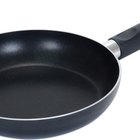
How to Cook Beef Top Round Pot Roast
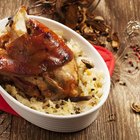
How to Cook Knuckle Roast

How to Make a Blackbuck Antelope Roast
How to Cook Roast Beef in a Cast-Iron ...

How to Cook Silverside on a Stove Top

How to Cook a Large Amount of Corned ...
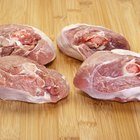
How to Cook Boneless Beef Shank
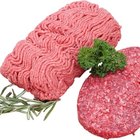
What Cuts of Meat Are Used for Ground ...
How to Make a Bottom Roast
How to Make Beef Bottom Round Roast ...
How to Slow Cook a Pot Roast With Beef ...

How to Marinate a Top Round Roast
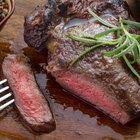
How to Cook a Seamed Eye Round
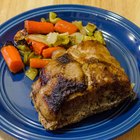
How to Cook Pork Roast in an Oven

How to Cook a Rolled Beef Chuck Roast ...

What Are the Temperatures for Slowly ...
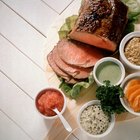
How to Sear a Roast Beef
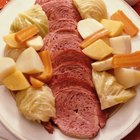
Instructions for Cutting Corned Beef
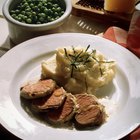
How to Make a Juicy Pork Tenderloin
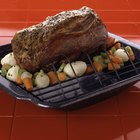
How to Cook a Really Tender Beef Roast ...
References
- Cook's Illustrated: Classic Pot Roast with Root Vegetables
- Cattlemen's Beef Board and National Cattlemen's Beef Association: Braising/ Pot Roasting
- The Kitchn: Food Science -- Why Tougher Meats Make Good Braises
- The Kitchn: Food Science -- Braising: Best Cuts of Beef for Braised Dishes
- Serious Eats: The Food Lab's Guide to Corned Beef and the Science of Simmering
- Betty Crocker: Timetable for Roasting Meats
- Mr. Food: Melt in Your Mouth Roast
- Cooking Light: How to Marinate Meat
Writer Bio
A former cake decorator and competitive horticulturist, Amelia Allonsy is most at home in the kitchen or with her hands in the dirt. She received her Bachelor's degree from West Virginia University. Her work has been published in the San Francisco Chronicle and on other websites.
Photo Credits
Jupiterimages/liquidlibrary/Getty Images